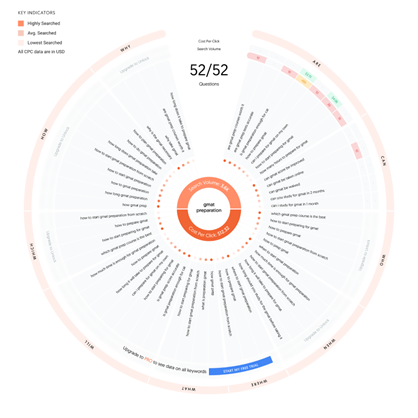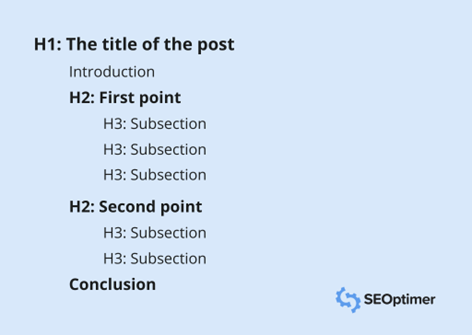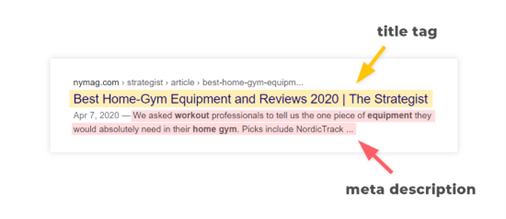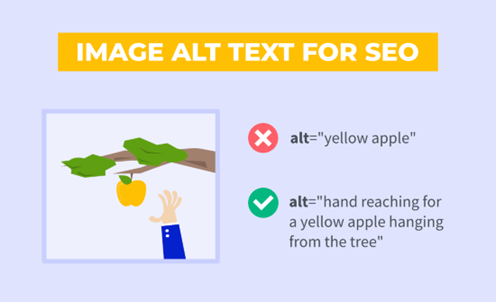Writing an SEO-Optimized blog post is often the first step toward ranking your website in search engines. This is the process of writing a piece of content that will appear and rank in the SERP (Search Engine Results Pages). There are many search engines on the Internet but the main ones are Google (obviously) and Bing.
Choosing which subject to write about is crucial because it should be relevant to the search queries (what people are searching for). To put it simply, your article should be written to match an already existing demand and provide a clear and relevant answer to it.
As you start your SEO journey, it could be overwhelming to write your first SEO-Optimized blog posts. You may not know which subject to choose, how to structure your post, etc.
In this article, you will discover how the Howdy Code team writes SEO-Friendly web pages.
Content Selection & Matching
Unless you’re a popular magazine or news website, chances are you don’t have an existing reader base, and therefore need to build an audience through content creation.
At the beginning of your journey, you will have to write content that matches an existing demand. You will write blog posts that target specific keywords that people are searching for. This is the principle of SEO.
But… How to select which keywords to target?
Let’s say you have a blog sharing tips about School Prep Tests. Your target users are often high-school or undergraduate students looking to prepare for tests such as the SAT or GMAT.
You will start by performing keyword research to get ideas. There are many free and paid tools out there to help you with this. Here is a short list of what I consider the best ones:
- Wordstream Keyword Tool (Free)
- Ubersuggest (Freemium)
- SEMrush (Paid)
- Ahref (Paid)
For the sake of this article, I will use a free tool to do the analysis. As you can see below, I performed research on WordStream for “How to prepare for the GMAT?”

I know right away that it is a search term that people are looking for due to the high volume of monthly searches. But there is another metric that a lot of free tools do not include, which is competitiveness. The higher the competition, the more difficult it will be to rank on the first results of the SERP.
To get an idea about the difficulty of the keyword, I will use Ubersuggest, a tool from Neil Patel to get SEO insights. As you can below, the SEO difficulty is a bit higher and the average web page that ranks in the top 10 has 112 backlinks and a domain authority of 66.

Now that you know the level of competition for your keyword, you have 2 options:
- Choose to continue and write an article for this keyword
- Keep looking further to find low-competition gems
Depending on your situation, choosing a keyword like this is often a bad idea since you don’t have the authority and historical content to rank in the first positions. You will likely go with the second option as it is less saturated and easier to rank for.
My favorite tool for this is Answer The Public, recently acquired by Neil Patel. As the name suggests, It gives you ideas about general questions people may be asking when searching for a subject. This is a goldmine of content ideas for your blog. Following our previous example about GMAT, these are the results generated by the tool:

You can be super creative with it and find low-competition keywords to target for your blog.
Keyword selection is a crucial step when it comes to writing an SEO-Optimized blog post. You have to select them strategically while taking into account your strengths and weaknesses.
If you’re a new blogger with no authority, we suggest you start with low-competition keywords even with low volume. This will allow Google Algorithms to put categorize your website quicker and the foundational authority.
On the other hand, the job is easier if you’re writing for a popular magazine or news website. All you have to do is match your content to high-volume relevant keywords since you already have the authority to back it up.
Now that you know everything about content matching and selection, let’s start with writing your first words.
SEO Writing Principles
As a future writer, you need to build the habits of successful writers
Writing your first SEO-Optimized article could be overwhelming without a clear direction to follow. As a future writer, you need to build the habits of successful writers. I suggest you to include a slot in your schedule, preferably early in the morning to avoid any distractions.
Don’t overthink too much when you’re just starting out. Open a Google Doc and start writing your first draft. As the legendary writer Stephen King said:
“start with forcing yourself to write sentence by sentence until you go to a flow state”.
Take inspiration from the popular blogs in your niche/industry and look at how they structure their content. Oftentimes, you will notice certain patterns in the way their articles are written. This is called on-site SEO.
But… what is on-site SEO?
According to the Search Engine Journal, on-site SEO is “the process of tweaking a page’s content, tags, and internal links to improve search visibility and increase traffic”.
In simple terms, this is the way you structure pages in order to help search engines better understand your website, and ultimately rank faster.
Here is a list of the best on-site SEO practices to follow when writing your blog post:
1. Choosing relevant keywords
This is the heartbeat of your SEO strategy. As we saw previously, make sure to target a keyword with enough volume and low competition.
2. Write an attention-grabbing title
Your headline should describe accurately what the article is about and include your target keyword selected earlier. It must grab the reader’s attention and make him want to read more.
You can include:
- Numbers – e.g. 10 Secret Places to Visit in Morocco
- Power Words that trigger emotion – e.g. Secret / Instantly / Free / etc.
- Open Loops – e.g. We Tried This Secret New Marketing Strategy…
3. Use header tags
Use header tags (H1, H2, H3, etc.) to break up your content into easy-to-read sections. A good rule of thumb is to include your main keyword in the H1 tag and semantic variations of it in other subheader tags.

4. Optimizing your meta tags
Your meta title and description are the first contact point with the user. It should be compelling and include your target keyword. It directly impacts your Click-Through-Rate (CTR), which is an important factor for ranking in the SERP.

5. Internal and External Links
As you write your article, you should naturally link it to other resources. This could be:
- Internally – Other relevant blog posts or pages on your website
- Externally – High-quality and authority resources
This will not only help search engine algorithms categorize your website as a trustworthy source of information but also offer more value to the reader.
6. Optimize your images
There are two SEO aspects when it comes to optimizing your images.
The first one is the size of the image. The heavier the images are and the slower your website takes to load, which impacts directly your SEO score.
The solution? Compress your images using a free tool called TinyPNG. This will drastically lower the size of your images without compromising the quality.
The second aspect is the Alt Tex. This is an HTML attribute that search engine bots use to understand what your post is about. This is a great opportunity for you to include your target keyword as well as semantic variations of it.
It must be descriptive of the image and not just keyword stuffing.

7. Use short paragraphs and sentences
Short and spaced paragraphs are key in the digital era as it makes your content easier to read and more engaging.
Forget what you learned in high school. This is an art in itself and it takes time to truly master it.
8. Mobile-Friendliness
According to Statcounter, mobile devices account for 58% of searches in 2022.
Make sure your blog is optimized for mobile devices, as more and more people are searching directly from their phones.
By following these best on-site SEO practices, you will improve your ranking in the SERP and set your blog for success.
Conclusion
You have now all the resources to write an SEO-Optimized blog post. You have learned how to perform keyword research and select your content, as well as the structure to follow when writing your SEO article.
Need help with your SEO strategy? Feel free to reach out to the Howdy Code Team to get your action plan.


Comments